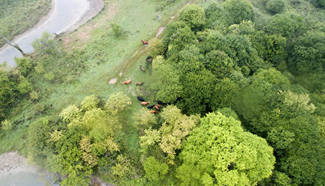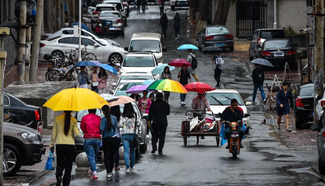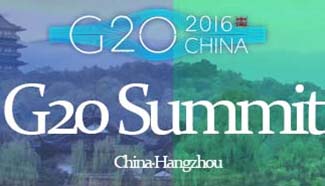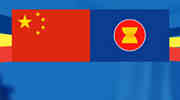LHASA, Aug. 30 (Xinhua) -- Fossil fuel and biomass are sources of black carbon, the substance that has accelerated glacier melting across the Himalayas and Tibetan Plateau, research has revealed.
The paper, published by "Nature Communications" on Aug. 23, found varying contributions from fossil fuel and biomass combustion to black carbon in the Himalayas and Tibetan Plateau.
In the remote, northern plateau, black carbon is predominantly derived from the burning of fossil fuel, while fossil fuel contributions to black carbon in the snow pits of the inner plateau region are lower, implying contributions from internal sources, such as yak dung combustion, according to the paper.
The study revealed an approximately equal influence of biomass combustion sources within the southern Tibetan Plateau/Himalayas that mainly stem from emissions from the Indo-Gangetic Plain.
The research was conducted by researchers from the Chinese Academy of Sciences (CAS) and Stockholm University.
The study provided data for the further analysis of air transported black carbon, and information that can be used by policymakers addressing glacier melting and emissions, said Kang Shichang, one of the authors of the report and a researcher with the Northwest Institute of Eco-Environment and Resources under the CAS.
It indicated pollution from burning yak dung for cooking or heating among herdsmen and farmers in some areas of the plateau might be higher than first imagined, said Kang.
In Tibet,about 74 percent of the autonomous region's population live in rural area, many of whom use yak or sheep dung as a heat source.
The region aims to replace traditional energy sources with electricity to reduce pollution.
The wider use of electricity will save 177,000 tonnes of coal and cut emissions of carbon dioxide by 400,000 tonnes in the next five years, according to the regional energy substitution plan for 2016-2020.
The plan, which is backed by 2.2 billion yuan (329 million U.S. dollars), will focus on on construction, transportation and domestic life, including improving accessibility to electric cookers, boilers, heaters and vehicles.










